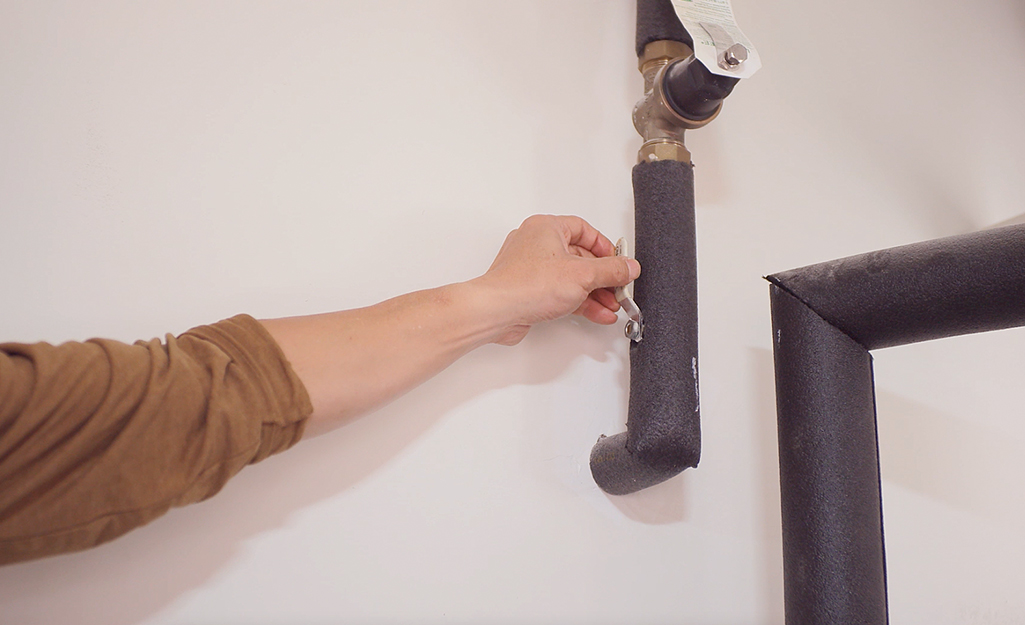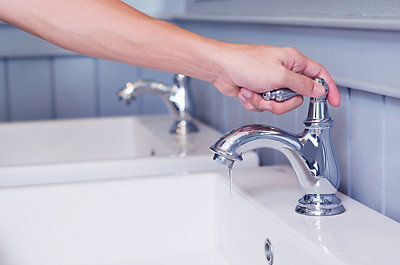How It's Vital to Repair a Dripping Faucet
How It's Vital to Repair a Dripping Faucet
Blog Article
What are your thoughts with regards to Should I Repair or Replace a Leaky Faucet??

Leaking taps might look like a small inconvenience, however their influence exceeds simply the annoyance of the noise. From drainage to incurring unnecessary monetary prices and wellness risks, neglecting a trickling tap can result in different repercussions. In this write-up, we'll delve into why it's vital to resolve this common household issue immediately and properly.
Wastefulness of Water
Environmental Effect
Trickling taps add significantly to water wastage. According to the Environmental Protection Agency (EPA), a single faucet leaking at one drip per secondly can waste greater than 3,000 gallons of water annually. This not just pressures water sources yet additionally influences ecological communities and wild animals depending on them.
Financial Prices
Increased Water Bills
Beyond the environmental impact, dripping taps can inflate water bills substantially. The gathered wastefulness over time converts right into greater energy costs, which might have been prevented with timely repair services.
Prospective Residential Property Damage
Furthermore, long term leaking can result in damage to components and surfaces surrounding the faucet. Water build-up can trigger staining, deterioration, and also structural problems if left neglected, leading to additional repair service costs.
Health and wellness Concerns
Mold and Mildew Development
The constant presence of wetness from a leaking tap creates a suitable setting for mold and mildew growth. These fungis not just jeopardize indoor air top quality however likewise pose wellness dangers, particularly for people with breathing conditions or allergic reactions.
Waterborne Diseases
Stationary water in dripping faucets can come to be a breeding place for germs and other microorganisms, increasing the danger of waterborne diseases. Impurities such as Legionella bacteria grow in stagnant water, possibly resulting in serious diseases when consumed or inhaled.
Do it yourself vs. Professional Fixing
Advantages and disadvantages of Do It Yourself Repair Work
While some might attempt to deal with a dripping faucet themselves, do it yourself repairs include their very own set of obstacles. Without correct understanding and devices, DIY attempts can aggravate the problem or cause insufficient repair work, lengthening the problem.
Benefits of Working With a Professional Plumber
Employing a specialist plumber ensures that the underlying root cause of the dripping faucet is attended to successfully. Plumbers have the proficiency and devices to detect and fix faucet issues successfully, conserving time and reducing the threat of further damage.
Step-by-Step Overview to Repairing a Dripping Faucet
Devices Needed
Before attempting to fix a dripping tap, collect the essential tools, including a flexible wrench, screwdrivers, replacement parts (such as washers or cartridges), and plumber's tape.
Common Faucet Issues and Their Solutions
Recognize the sort of tap and the specific issue causing the drip. Usual troubles consist of damaged washing machines, corroded valve seats, or defective O-rings. Refer to producer instructions or on-line tutorials for detailed support on repair services.
Safety nets
Routine Maintenance Tips
To prevent dripping taps, execute regular maintenance such as cleaning aerators, checking for leaks, and replacing damaged components immediately. Furthermore, consider mounting water-saving gadgets or upgrading to more reliable fixtures.
Importance of Prompt Fixes
Resolving leaking taps as soon as they're noticed avoids more water wastefulness and prospective damages, eventually conserving both water and money in the long run.
Impact on Residential Or Commercial Property Value
Perception of Well-Maintained Residential Or Commercial Property
Preserving a property in good condition, including resolving maintenance concerns like dripping taps, enhances its regarded value and worth among possible buyers or lessees.
Influence on Resale Worth
Residences with well-maintained plumbing fixtures, consisting of faucets, command higher resale values in the realty market. Resolving leaking taps can contribute to a positive impact during building inspections and settlements.
Ecological Obligation
Specific Contribution to Preservation
Taking responsibility for taking care of trickling taps aligns with wider efforts towards water preservation and environmental sustainability. Every individual's activities collectively make a considerable impact on preserving valuable sources.
Lasting Living Practices
By focusing on timely repairs and embracing water-saving behaviors, individuals add to sustainable living techniques that benefit both present and future generations.
Final thought
Addressing a trickling faucet surpasses plain ease; it's a crucial action toward preserving water, reducing monetary costs, and safeguarding health and wellness and home. Whether through do it yourself repairs or specialist support, acting to take care of leaking faucets is a little yet impactful method to advertise accountable stewardship of sources and add to a much healthier, extra lasting future.
How to Fix a Leaky Faucet: Step-by-Step Repair Guide
A leaky faucet may seem like a simple annoyance, but if it's not fixed promptly, that leak could cost hundreds to potentially thousands. From water damage to mold, mildew, and high water bills, even a tiny leak can be catastrophic if left unattended. Damage like this can even affect the overall value of your home, so it's important to take the right approach for leaky faucet repair. You may need the help of a plumber in some cases, but we've got a few tips you can try on how to fix a leaky faucet before calling the pros.
Four Faucet Types
When you're learning how to fix a leaky faucet, the first step is knowing what kind of faucet you're working with! There are four common types.
Cartridge Faucets
Cartridge faucets come in one- or two-handled varieties. In one-handled cartridge faucets, hot and cold water combines in a single cartridge. In the two-handled versions, hot and cold water are controlled separately and mixed in the faucet.
Ball Faucets
Ball faucets have a single lever you push up and down to adjust the pressure and rotate to change the temperature. A slotted metal ball controls the amount of water allowed into the spout.
Compression Washer Faucets
They're the oldest type of faucet, but they're still used in many homes — especially older ones. Compression faucets have two separate handles that, when turned, raise or lower the washer that seals a water valve. This valve stops water from flowing through the faucet when it is turned off.
Disc Faucets
Disc faucets rarely need to be repaired due to their maintenance-free design. The water flow is controlled by two discs — the upper one raises and lowers against a fixed lower disc, creating a watertight seal. If your disc faucet starts leaking, you may need to replace the seals or clean residue buildup from the inlets.
Fixing a Leaky Faucet
Step 1: Turn Off the Water
Whether you're learning how to fix a leaky bathtub faucet or how to fix a leaky kitchen faucet, always turn off the water supply to your working area when you're fixing a leak. The last thing you want is a flood added to your list of things to fix.
Look for the shutoff valves below your sink or around the tub and turn them clockwise to stop the water flow. If your faucet doesn't have shutoff valves, you may need to turn off the water for the whole house. Check to make sure it's off by turning the faucet on. If nothing comes out, you're ready to start the repair.
Step 2: Take Apart the Faucet
How you disassemble your faucet depends on the type of fixture you have. You can use a flathead screwdriver to remove the caps on top of the handle or handles for cartridge and compression faucets. Inside, you should see handle screws. Unscrew these with a screwdriver to remove the handle.
Disc- and ball-style faucets will typically have an inlet screw near the handle, and removing that will reveal the interior of the faucet.
Detach the Valve Stem
For cartridge- and compression-style faucets, you'll see the inner valve stem or cartridge once you remove the faucet handles. If you have a compression faucet, unscrew the brass valve stem. If you have a cartridge faucet, pull out the cartridge. If your cartridge has been in place for a while, it may require some tools or extra force to remove it due to mineral deposits.
Examine and Replace Parts
Once you've removed the parts, check them out to confirm what needs to be replaced. You may see corroded rubber washers, O-rings, stems, or cartridges. On a ball-style faucet, check the seats and springs for damage.
If you need to repair a leaky disc faucet, check the inlet and seals on the lower disc.
Once you determine what parts must be replaced, visit your local hardware store. Bring the damaged parts with you to ensure you can purchase the correct components to replace them.
Clean Valves and Faucet Cavity
If you've removed a stem or cartridge, you may notice mineral buildup in the faucet's threads. Use white vinegar to clean the valve seat by soaking it for a few minutes, then scrub it away with a soft toothbrush and rinse with warm water. You can also clean the interior of the faucet in the same way.
Reassemble the Faucet
Once your faucet is cleaned and the required parts have been replaced, it's time to reassemble it. Put the pieces back together and slowly turn the water supply back on. Doing this slowly is crucial because too much initial water pressure can damage the new hardware you've just installed.
https://homewarranty.firstam.com/blog/how-to-fix-leaky-faucet

We were introduced to that article on Why Are My Faucets Dripping (And Can I Fix It Myself)? from someone on another site. For those who appreciated our blog post please make sure you remember to share it. Many thanks for being here. Kindly come visit our blog back soon.
Report this page